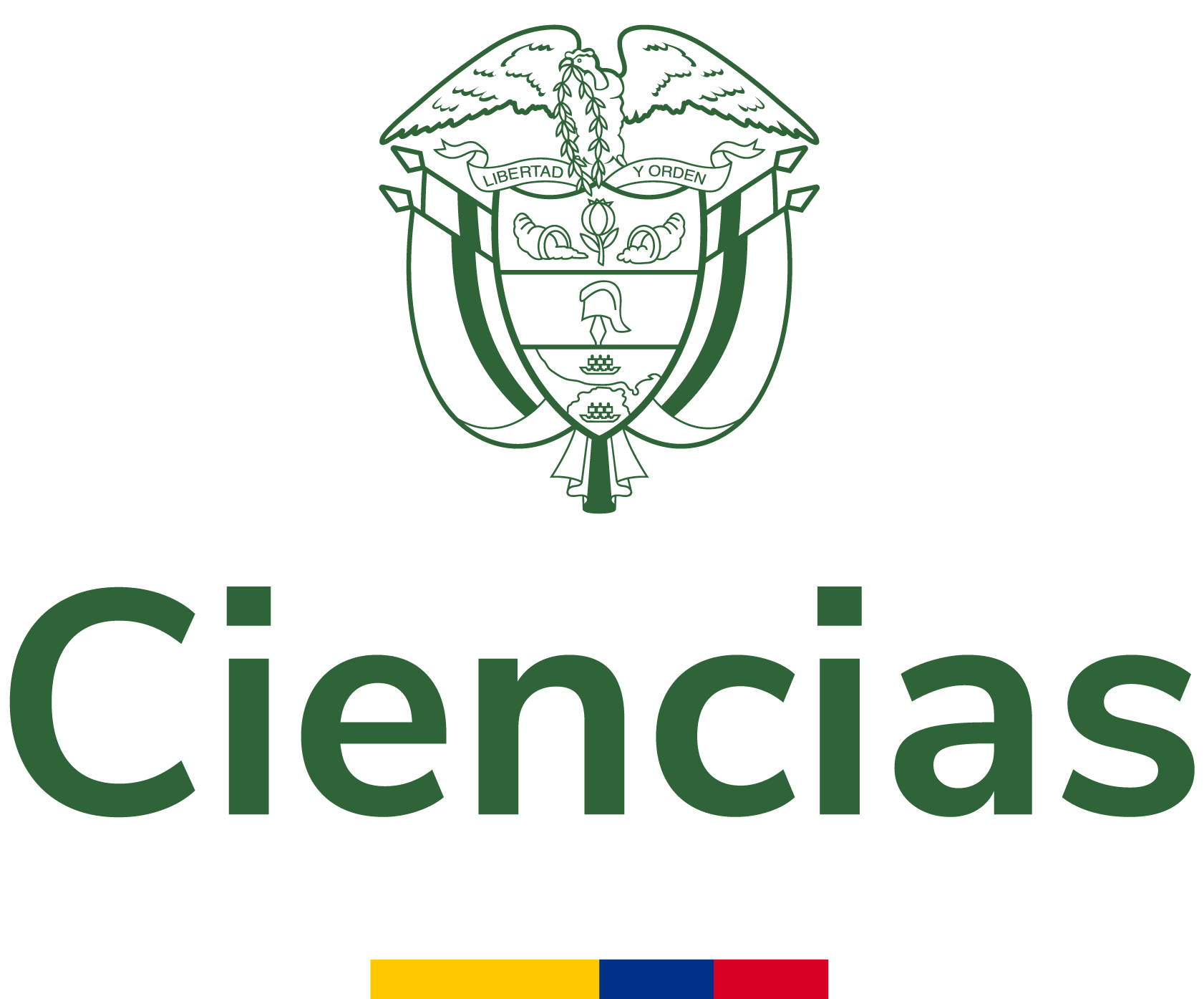NO and H2O2 as possible candidates of refractoriness of Plasmodium falciparum infection in Anopheles albimanus
Malaria is an infectious disease that affects many people around the world. It is caused by Plasmodium parasites and transmitted by Anopheles mosquitoes. The life cycle of Plasmodium is developed in both human and mosquitoes hosts and therefore, both can respond to the infection with different immun...
- Autores:
-
Vélez Quiroz, María Alejandra
Robledo Restrepo, Sara Maria
- Tipo de recurso:
- Fecha de publicación:
- 2018
- Institución:
- Universidad CES
- Repositorio:
- Repositorio Digital - Universidad CES
- Idioma:
- eng
- OAI Identifier:
- oai:repository.ces.edu.co:10946/3803
- Acceso en línea:
- http://hdl.handle.net/10946/3803
- Palabra clave:
- Malaria
Facultad de Ciencias y Biotecnología - Pregrado en Biología
Plasmodium falciparum
- Rights
- restrictedAccess
- License
- Restringido
| id |
CES2_18b0041a8ab51c040638adc3b055df0c |
|---|---|
| oai_identifier_str |
oai:repository.ces.edu.co:10946/3803 |
| network_acronym_str |
CES2 |
| network_name_str |
Repositorio Digital - Universidad CES |
| repository_id_str |
|
| dc.title.spa.fl_str_mv |
NO and H2O2 as possible candidates of refractoriness of Plasmodium falciparum infection in Anopheles albimanus |
| title |
NO and H2O2 as possible candidates of refractoriness of Plasmodium falciparum infection in Anopheles albimanus |
| spellingShingle |
NO and H2O2 as possible candidates of refractoriness of Plasmodium falciparum infection in Anopheles albimanus Malaria Facultad de Ciencias y Biotecnología - Pregrado en Biología Plasmodium falciparum |
| title_short |
NO and H2O2 as possible candidates of refractoriness of Plasmodium falciparum infection in Anopheles albimanus |
| title_full |
NO and H2O2 as possible candidates of refractoriness of Plasmodium falciparum infection in Anopheles albimanus |
| title_fullStr |
NO and H2O2 as possible candidates of refractoriness of Plasmodium falciparum infection in Anopheles albimanus |
| title_full_unstemmed |
NO and H2O2 as possible candidates of refractoriness of Plasmodium falciparum infection in Anopheles albimanus |
| title_sort |
NO and H2O2 as possible candidates of refractoriness of Plasmodium falciparum infection in Anopheles albimanus |
| dc.creator.fl_str_mv |
Vélez Quiroz, María Alejandra Robledo Restrepo, Sara Maria |
| dc.contributor.author.none.fl_str_mv |
Vélez Quiroz, María Alejandra Robledo Restrepo, Sara Maria |
| dc.subject.spa.fl_str_mv |
Malaria Facultad de Ciencias y Biotecnología - Pregrado en Biología Plasmodium falciparum |
| topic |
Malaria Facultad de Ciencias y Biotecnología - Pregrado en Biología Plasmodium falciparum |
| description |
Malaria is an infectious disease that affects many people around the world. It is caused by Plasmodium parasites and transmitted by Anopheles mosquitoes. The life cycle of Plasmodium is developed in both human and mosquitoes hosts and therefore, both can respond to the infection with different immune mechanisms including phagocytosis and release of anti-parasite molecules. In this study, the Nitric Oxide (NO) and the Hydrogen Peroxide (H 2 O 2 ) were measured in Anopheles albimanus’ midgut infected with Plasmodium falciparum gametocytes. |
| publishDate |
2018 |
| dc.date.issued.none.fl_str_mv |
2018-03 |
| dc.date.accessioned.none.fl_str_mv |
2019-06-14T20:35:23Z |
| dc.date.available.none.fl_str_mv |
2019-06-14T20:35:23Z |
| dc.type.spa.fl_str_mv |
Articulo de revista |
| dc.type.coar.fl_str_mv |
http://purl.org/coar/resource_type/c_2df8fbb1 |
| dc.type.driver.none.fl_str_mv |
info:eu-repo/semantics/article |
| dc.identifier.other.none.fl_str_mv |
T616.9362 V436 |
| dc.identifier.uri.none.fl_str_mv |
http://hdl.handle.net/10946/3803 |
| identifier_str_mv |
T616.9362 V436 |
| url |
http://hdl.handle.net/10946/3803 |
| dc.language.iso.spa.fl_str_mv |
eng |
| language |
eng |
| dc.rights.coar.fl_str_mv |
http://purl.org/coar/access_right/c_16ec |
| dc.rights.license.spa.fl_str_mv |
Restringido |
| dc.rights.accessrights.none.fl_str_mv |
info:eu-repo/semantics/restrictedAccess |
| rights_invalid_str_mv |
Restringido http://purl.org/coar/access_right/c_16ec |
| eu_rights_str_mv |
restrictedAccess |
| dc.publisher.spa.fl_str_mv |
Universidad CES |
| institution |
Universidad CES |
| bitstream.url.fl_str_mv |
https://repository.ces.edu.co/bitstreams/28a47124-a247-449d-a2b5-fe6ff4abcebf/download https://repository.ces.edu.co/bitstreams/33698e4b-5290-4f6c-9979-968a7bf589f8/download https://repository.ces.edu.co/bitstreams/f32b1d72-7a93-48b1-b992-b7586f410064/download https://repository.ces.edu.co/bitstreams/8e7773b4-95ed-4164-a2e6-15cacde1bcf6/download https://repository.ces.edu.co/bitstreams/533b90e4-a6ed-464f-b1b1-8b7751035aef/download https://repository.ces.edu.co/bitstreams/8f48cee4-73e2-484d-a3a8-e528146ddbee/download https://repository.ces.edu.co/bitstreams/9ec5825b-6227-4506-8a95-11e885bc8cd3/download https://repository.ces.edu.co/bitstreams/b68f1de3-1f8d-4ae1-8723-2adcd2e3c7d3/download https://repository.ces.edu.co/bitstreams/a17781f4-98bc-4909-8458-2c0f78729a48/download https://repository.ces.edu.co/bitstreams/1dbeb9fa-996f-4ad4-8eed-b9d5f46b0633/download https://repository.ces.edu.co/bitstreams/12180da7-a7f9-4ea4-b2cf-4759cc8f2a85/download https://repository.ces.edu.co/bitstreams/6f1e693b-bf34-40a0-a59b-d629eea3c20d/download https://repository.ces.edu.co/bitstreams/b679a986-a48a-4be1-b9c3-4d6dd298eb12/download https://repository.ces.edu.co/bitstreams/5c426df3-b017-4464-a243-97a442cd2282/download https://repository.ces.edu.co/bitstreams/50432c91-bfde-42c4-b236-9cb95a662e1a/download https://repository.ces.edu.co/bitstreams/75b9ea01-44e1-449f-9b06-152c68dd4c51/download |
| bitstream.checksum.fl_str_mv |
e1c06d85ae7b8b032bef47e42e4c08f9 ed032be80f204953de1fb62ca8bb1dac 68b329da9893e34099c7d8ad5cb9c940 ed032be80f204953de1fb62ca8bb1dac e1c06d85ae7b8b032bef47e42e4c08f9 ed032be80f204953de1fb62ca8bb1dac 7c080cf25acaf8b121c543f50337d897 31594d12515984f246fb9bf00654ca33 36ac6e70060c06ec89c9a2c7e3d84d8d 31594d12515984f246fb9bf00654ca33 7c080cf25acaf8b121c543f50337d897 31594d12515984f246fb9bf00654ca33 93c7bbae2f5ac2f288ae13eee2f47d08 992cf04e1b04896a1af9835b0f9aacf2 81091b4ac5b611c1d0dd1093b9286111 e562b87109e544898f370e762bac71cb |
| bitstream.checksumAlgorithm.fl_str_mv |
MD5 MD5 MD5 MD5 MD5 MD5 MD5 MD5 MD5 MD5 MD5 MD5 MD5 MD5 MD5 MD5 |
| repository.name.fl_str_mv |
Repositorio CES |
| repository.mail.fl_str_mv |
bibliotecas@biteca.com |
| _version_ |
1841461020269215744 |
| spelling |
Vélez Quiroz, María Alejandra5fb81cdb-9693-4a3f-8646-d9c1096feba3Robledo Restrepo, Sara Mariae1fd21d3-d722-4412-8445-5661199a92fc2019-06-14T20:35:23Z2019-06-14T20:35:23Z2018-03T616.9362 V436http://hdl.handle.net/10946/3803Malaria is an infectious disease that affects many people around the world. It is caused by Plasmodium parasites and transmitted by Anopheles mosquitoes. The life cycle of Plasmodium is developed in both human and mosquitoes hosts and therefore, both can respond to the infection with different immune mechanisms including phagocytosis and release of anti-parasite molecules. In this study, the Nitric Oxide (NO) and the Hydrogen Peroxide (H 2 O 2 ) were measured in Anopheles albimanus’ midgut infected with Plasmodium falciparum gametocytes.engUniversidad CESMalariaFacultad de Ciencias y Biotecnología - Pregrado en BiologíaPlasmodium falciparumNO and H2O2 as possible candidates of refractoriness of Plasmodium falciparum infection in Anopheles albimanusArticulo de revistainfo:eu-repo/semantics/articlehttp://purl.org/coar/resource_type/c_2df8fbb1Restringidoinfo:eu-repo/semantics/restrictedAccesshttp://purl.org/coar/access_right/c_16ecPregradohttp://purl.org/coar/resource_type/c_2df8fbb1TEXTAutorización.pdf.txtAutorización.pdf.txtExtracted texttext/plain2https://repository.ces.edu.co/bitstreams/28a47124-a247-449d-a2b5-fe6ff4abcebf/downloade1c06d85ae7b8b032bef47e42e4c08f9MD56NO and H2O2 as possible candidates.pdf.txtNO and H2O2 as possible candidates.pdf.txtExtracted texttext/plain23238https://repository.ces.edu.co/bitstreams/33698e4b-5290-4f6c-9979-968a7bf589f8/downloaded032be80f204953de1fb62ca8bb1dacMD59Restringido.pdf.txtRestringido.pdf.txtExtracted texttext/plain1https://repository.ces.edu.co/bitstreams/f32b1d72-7a93-48b1-b992-b7586f410064/download68b329da9893e34099c7d8ad5cb9c940MD512Trabajo de grado.txtTrabajo de grado.txtExtracted texttext/plain23238https://repository.ces.edu.co/bitstreams/8e7773b4-95ed-4164-a2e6-15cacde1bcf6/downloaded032be80f204953de1fb62ca8bb1dacMD514Formato autorización.txtFormato autorización.txtExtracted texttext/plain2https://repository.ces.edu.co/bitstreams/533b90e4-a6ed-464f-b1b1-8b7751035aef/downloade1c06d85ae7b8b032bef47e42e4c08f9MD516NO and H 2 O 2 as possible candidates of refractoriness of Plasmodium falciparum infection in Anopheles albimanus.txtNO and H 2 O 2 as possible candidates of refractoriness of Plasmodium falciparum infection in Anopheles albimanus.txtExtracted texttext/plain23238https://repository.ces.edu.co/bitstreams/8f48cee4-73e2-484d-a3a8-e528146ddbee/downloaded032be80f204953de1fb62ca8bb1dacMD518THUMBNAILAutorización.pdf.jpgAutorización.pdf.jpgGenerated Thumbnailimage/jpeg59161https://repository.ces.edu.co/bitstreams/9ec5825b-6227-4506-8a95-11e885bc8cd3/download7c080cf25acaf8b121c543f50337d897MD57NO and H2O2 as possible candidates.pdf.jpgNO and H2O2 as possible candidates.pdf.jpgGenerated Thumbnailimage/jpeg33626https://repository.ces.edu.co/bitstreams/b68f1de3-1f8d-4ae1-8723-2adcd2e3c7d3/download31594d12515984f246fb9bf00654ca33MD510Restringido.pdf.jpgRestringido.pdf.jpgGenerated Thumbnailimage/jpeg47424https://repository.ces.edu.co/bitstreams/a17781f4-98bc-4909-8458-2c0f78729a48/download36ac6e70060c06ec89c9a2c7e3d84d8dMD513Trabajo de grado.jpgTrabajo de grado.jpgGenerated Thumbnailimage/jpeg33626https://repository.ces.edu.co/bitstreams/1dbeb9fa-996f-4ad4-8eed-b9d5f46b0633/download31594d12515984f246fb9bf00654ca33MD515Formato autorización.jpgFormato autorización.jpgGenerated Thumbnailimage/jpeg59161https://repository.ces.edu.co/bitstreams/12180da7-a7f9-4ea4-b2cf-4759cc8f2a85/download7c080cf25acaf8b121c543f50337d897MD517NO and H 2 O 2 as possible candidates of refractoriness of Plasmodium falciparum infection in Anopheles albimanus.jpgNO and H 2 O 2 as possible candidates of refractoriness of Plasmodium falciparum infection in Anopheles albimanus.jpgGenerated Thumbnailimage/jpeg33626https://repository.ces.edu.co/bitstreams/6f1e693b-bf34-40a0-a59b-d629eea3c20d/download31594d12515984f246fb9bf00654ca33MD519ORIGINALRestringido.pdfRestringido.pdfapplication/pdf214981https://repository.ces.edu.co/bitstreams/b679a986-a48a-4be1-b9c3-4d6dd298eb12/download93c7bbae2f5ac2f288ae13eee2f47d08MD511NO and H 2 O 2 as possible candidates of refractoriness of Plasmodium falciparum infection in Anopheles albimanusNO and H 2 O 2 as possible candidates of refractoriness of Plasmodium falciparum infection in Anopheles albimanusTrabajo de gradoapplication/pdf77549https://repository.ces.edu.co/bitstreams/5c426df3-b017-4464-a243-97a442cd2282/download992cf04e1b04896a1af9835b0f9aacf2MD58Formato autorizaciónFormato autorizaciónapplication/pdf775612https://repository.ces.edu.co/bitstreams/50432c91-bfde-42c4-b236-9cb95a662e1a/download81091b4ac5b611c1d0dd1093b9286111MD52LICENSElicense.txtlicense.txttext/plain; charset=utf-81536https://repository.ces.edu.co/bitstreams/75b9ea01-44e1-449f-9b06-152c68dd4c51/downloade562b87109e544898f370e762bac71cbMD5310946/3803oai:repository.ces.edu.co:10946/38032024-12-13 21:00:01.117open.accesshttps://repository.ces.edu.coRepositorio CESbibliotecas@biteca.comRW4gbWkgY2FsaWRhZCBkZSBhdXRvciBkZWwgdHJhYmFqbyBkZSBncmFkbywgdHJhYmFqbyBkZSBpbnZlc3RpZ2FjacOzbiBvIHRlc2lzIHkgYWN0dWFuZG8gZW4gbm9tYnJlIHByb3BpbywgZGVjbGFybyBsbyBzaWd1aWVudGU6IAoxKVF1ZSBkZSBhY3VlcmRvIGNvbiBsbyBzZcOxYWxhZG8gZW4gZWwgYXJ0w61jdWxvIDUzIGRlbCByZWdsYW1lbnRvIGRlIHByb3BpZWRhZCBpbnRlbGVjdHVhbCBkZSBsYSBVbml2ZXJzaWRhZCBDRVMsIGhhZ28gZW50cmVnYSBkZSBtaSB0cmFiYWpvIGRlIGdyYWRvLCB0cmFiYWpvIGRlIGludmVzdGlnYWNpw7NuIG8gdGVzaXMgYSBsYSBCaWJsaW90ZWNhIEZ1bmRhZG9yZXMuIExhIGVudHJlZ2Egc2UgcmVhbGl6YSBlbiBmb3JtYXRvIGRpZ2l0YWwuIDIpIFF1ZSBsYSBvYnJhIGEgZW50cmVnYXIgYSBsYSBCaWJsaW90ZWNhIEZ1bmRhZG9yZXMgZXMgb3JpZ2luYWwgeSBzdSBjcmVhY2nDs24gc2UgcmVhbGl6w7Mgc2luIHRyYXNncmVkaXIgZGVyZWNob3MgZGUgYXV0b3IgZGUgdGVyY2Vyb3MuIFBvciBsbyB0YW50bywgbGEgb2JyYSBlcyBkZSBtaSBhdXRvcsOtYSB5IHNveSBlbCB0aXR1bGFyIGRlIGxhIG1pc21hLiAzKSBBbnRlIGN1YWxxdWllciByZWNsYW1hY2nDs24gZGUgdW4gdGVyY2VybyBxdWUgY3JlYSBxdWVicmFudGFkb3Mgc3VzIGRlcmVjaG9zIGRlIHByb3BpZWRhZCBpbnRlbGVjdHVhbCBlbiByYXrDs24gYSBsYSBvYnJhIHBvciBtaSBlbnRyZWdhZGEsIG1hbnRlbmdvIGluZGVtbmUgYSBsYSBVbml2ZXJzaWRhZCBDRVMgZGUgY3VhbHF1aWVyIHRpcG8gZGUgcmVzcG9uc2FiaWxpZGFkLCBhc3VtacOpbmRvbGEgZW4gbWkgbm9tYnJlIHkgZGVmZW5kaWVuZG8gbG9zIGRlcmVjaG9zIHF1ZSBhIGNvbnRpbnVhY2nDs24gYXV0b3Jpem8uICAKCkFVVE9SSVpBQ0nDk04KCkF1dG9yaXpvIGEgbGEgVW5pdmVyc2lkYWQgQ0VTIHBhcmEgcXVlIHV0aWxpY2UgeSB1c2UgcG9yIGN1YWxxdWllciBtZWRpbyBjb25vY2lkbyBvIHBvciBjb25vY2Vyc2UsIGxvcyBkZXJlY2hvcyBwYXRyaW1vbmlhbGVzIGRlIGRpc3RyaWJ1Y2nDs24sIHJlcHJvZHVjY2nDs24geSBjb211bmljYWNpw7NuIHDDumJsaWNhIHF1ZSBtZSBhc2lzdGVuIGNvbW8gY3JlYWRvciBkZSBsYSBvYnJhIG9iamV0byBkZWwgcHJlc2VudGUgZG9jdW1lbnRvLiBMYSBwcmVzZW50ZSBhdXRvcml6YWNpw7NuIG5vIHNlIHJlZmllcmUgc8OzbG8gYWwgZGVyZWNobyBkZSB1c28gc29icmUgbGEgb2JyYSBlbiBmb3JtYXRvIGbDrXNpY28gbyBzb3BvcnRlIG1hdGVyaWFsLCBzaW5vIGVuIGN1YWxxdWllciBmb3JtYXRvIGNvbm9jaWRvIG8gcG9yIGNvbm9jZXIuIMOJc3RhIGF1dG9yaXphY2nDs24gc2Ugb3RvcmdhIGF0ZW5kaWVuZG8gYSBsb3MgdMOpcm1pbm9zIHNlw7FhbGFkb3MgZW4gbGEgTGV5IDIzIGRlIDE5ODIsIExleSA0NCBkZSAxOTkzLCBEZWNpc2nDs24gQW5kaW5hIDM1MSBkZSAxOTkzLCBEZWNyZXRvIDQ2MCBkZSAxOTk1IHkgZGVtw6FzIG5vbWFzIGFwbGljYWJsZXMgc29icmUgbGEgbWF0ZXJpYS4K |






